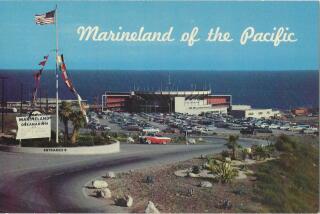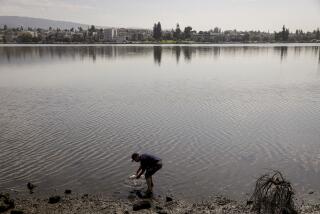‘Aw, It Won’t Hurt to Take Just One . . . ‘
- Share via
The determined child was meticulous as she extracted the desperate animal from the hiding place where she had cornered it. It was powerless to escape her grasp now. She purposely held it so that it couldn’t breathe, beamed with pride and delight at her accomplishment, then handed the terrified little creature to her younger brother. He smiled broadly at it for a few seconds, then, again making certain it couldn’t breathe and would soon be dead, secured it for the trip home.
Demented children? Quite the opposite--curious, intelligent, well-meaning offspring of equally well-intentioned parents, who observed and encouraged their actions. It happens all the time. Especially on weekends. At low tide.
Just another tide pool murder--just one less fascinating sea animal no longer there for others to discover and enjoy.
Tide pools are the shallow, usually rocky areas along our coastline that become exposed for a few hours during low tide. These areas contain a fascinating variety of sea creatures and plants--crabs, fish, sea urchins, chitons, sculpins, starfish (like the “victim” in the opening scenario), spiny lobsters, abalones, mussels, sea hares, deadman’s fingers, giant kelp bulbs and more. Tide pools are the marine equivalent of a “petting zoo.” Except that here, the unfortunate inhabitants are too often taken home to die.
Yet tide pools are terrific places to take children for fun, educational family outings. Low tide can create a “Sesame Street” right on the beach, where parents have the opportunity to introduce their children to the ocean and teach them responsibility and respect for life, while simultaneously having a great time.
Unfortunately, a situation like that is the exception. So, what are the children actually learning? How to inadvertently kill marine animals for sport, while destroying the very tide pool environment they enjoy so much.
This is unintentional, of course, and that’s the sad part. The majority of tide pool visitors have no conception of the fragile nature of the environment they enjoy and of the destruction they inadvertently wreak because of their lack of information.
For example, the look on a child’s face as it turns over a rock to reveal a bat star or a shimmering abalone shell is priceless. But--remember the rock? If it isn’t returned to its original position, the other creatures living under it are doomed; exposure to the drying air or the sunlight can be lethal (which is why they were under the rock in the first place).
The irony is that most tide pool visitors will, eagerly and meticulously, exercise appropriate care with both the creatures they discover and the tide pool habitat if they’re made aware of what to do. Simply replacing overturned rocks and gently replacing sea critters after examining them would vastly ameliorate the amount of damage many tide pool visitors cause.
At the Cabrillo tide pools on Point Loma, a brochure is available at the entrance to the path leading to the beach. It briefly describes some of the tide pool creatures and explains how to do the least amount of damage: again, replacing overturned rocks and not collecting the animals, but returning them to the water for others to discover. It’s an effective approach but needs to be expanded to tide pool areas along the entire coast--especially at state beaches.
Yet perhaps the children themselves could be taught about tide pool conservation--and would subsequently teach Mom and Dad (something kids revel in when given the chance). Because children can be reached en masse through the schools, why not have, as part of the state curriculum, a requirement for marine conservation instruction?
As things stand now, the condition of our tide pools is teaching adults and children alike the result of “just one” reasoning. A tide pool trip to Mexico can reveal purple sea urchins so thick they seem to have been sprayed on the rocks and starfish in almost every small pool. Our tide pools could be similar to this, save for those “collectors” who rationalize their dusty collection of dead animals by saying “Aw, it won’t hurt to take just one.”
Of course, that’s what many of the other thousands of tide pool visitors said about the tiny sea creatures they collected.
Just another tide pool murder. And then there were none . . .
DR
More to Read
Sign up for The Wild
We’ll help you find the best places to hike, bike and run, as well as the perfect silent spots for meditation and yoga.
You may occasionally receive promotional content from the Los Angeles Times.






